- Introduction
- Some photos
- Specs
- Prices
- Performance and Compatibility: My Experience with the Latest Intel Processors and DDR5 RAM
- Design and Build Quality: Evaluating the Thermal Design and Sturdy Power Solution
- Connectivity and Networking: Analyzing the Next-Gen Options and WiFi Performance
- BIOS and Fine Tuning: The Ease of Updating and the Impact of Customization Features
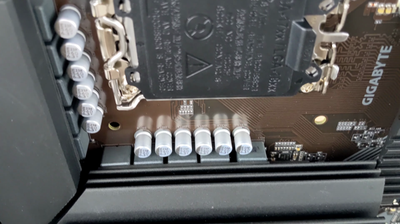
My use of the GIGABYTE B760 Gaming X AX Motherboard (2024)
My use of the GIGABYTE B760 Gaming X AX Motherboard: performance, design, connectivity, and BIOS features.
Introduction
I recently upgraded my PC setup and below share my experience with the GIGABYTE B760 Gaming X AX motherboard - particularly how it works with both 12th and 13th Gen Intel Core processors and DDR5 RAM.
Some photos (click to enlarge)
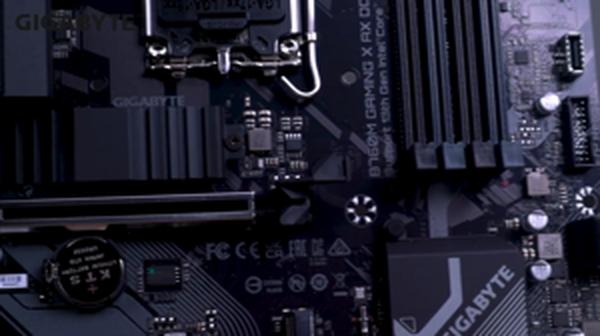
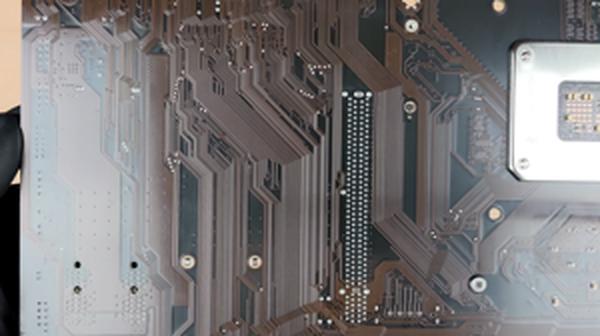
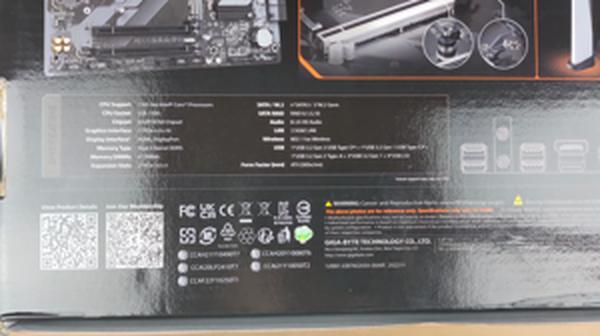
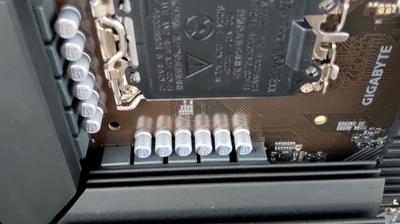
Specs of the GIGABYTE B760 Gaming X AX Motherboard
- Release Year
- Brand
- Chipset Type
- Compatible Devices
- Compatible Processors
- Cpu Socket
- Memory Clock Speed
- Memory Storage Capacity
- Model Name
- Platform
- Ram Memory Technology
Prices
Performance and Compatibility: My Experience with the Latest Intel Processors and DDR5 RAM
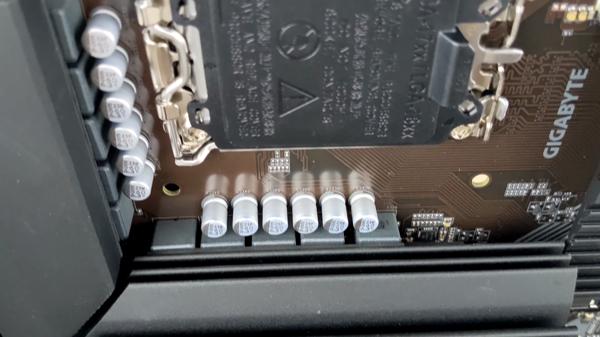
Embarking on my latest PC build adventure, I've been putting the GIGABYTE B760 Gaming X AX motherboard through its paces, closely observing its interplay with 12th and 13th Gen Intel Core processors and the new DDR5 RAM. The journey hasn't been without its bumps, but the overall experience leans positively.
Here's my quick rundown in list form:
Stable Performance: With an i5-13500 and 32GB of RAM, this board delivers a smooth and stable operation. Gaming, 3D modeling, video editing—you name it, the B760 handles it all like a champ.
Cutting-Edge Technology: This motherboard doesn't just toe the line with current standards; it's forward-looking with DDR5 compatibility and solid next-gen connectivity features, crucial for staying relevant.
Installation and BIOS: The board's user-friendliness extends to straightforward component installation and BIOS management, a relief, especially for those less versed in the arcane arts of PC assembling.
However, compatibility and technical woes remind us that not all that glitters is gold:
DDR5 Teething Problems: While this motherboard is a gateway to utilizing faster DDR5 RAM, there have been compatibility hiccups causing crashes and necessitating BIOS updates and troubleshooting.
M.2 Installation: A shout-out to the easy M.2 SSD installation is warranted, even though it's now expected rather than exceptional.
Coil Whine: An unexpected guest in the form of coil whine has surfaced in some units, a tiny but annoying mar on the otherwise smooth experience.
As far as processors are concerned, the B760 Gaming X AX seems to have a sweet spot. The 12th Gen CPUs slot in with zero fuss, but if you're dreaming of harnessing that 13th Gen prowess, be prepared for a BIOS update—something that isn't too cumbersome, thanks to the Q-Flash Plus feature, but can be intimidating for first timers. And while it's mostly smooth sailing, remember, the BIOS journey might not be as straightforward for everyone, as some users have reported issues.
I've also noted that users with legacy hardware seeking to upgrade may face compatibility roadblocks, inherent with adopting any new tech. If you're still holding onto MBR-formatted drives, expect some extra steps to bring things in line with the UEFI standard this motherboard prefers.
In the grand scheme, despite its quirks, the GIGABYTE B760 Gaming X AX provides robust performance and a suite of modern features, marking it as a solid foundation for most builds. While I wouldn't recommend it unreservedly, especially for upgraders dealing with legacy hardware, it's a compelling choice for a new, high-performance PC with an eye on future-proofing—at least until the next technological leapfrog.
Design and Build Quality: Evaluating the Thermal Design and Sturdy Power Solution

When assessing the design and build quality of the GIGABYTE B760 Gaming X AX motherboard, two facets stand out immediately: the thermal design and the power solution. Here's my take, having personally engaged with the motherboard:
Thermal Design: GIGABYTE seems to have put a lot of thought into this. The advanced thermal design and M.2 Thermal Guard are hard at work ensuring that heat doesn't become the enemy of performance. This is crucial, especially during those marathon gaming sessions or intense workloads. I've noticed that temperatures are kept in check, which translates to sustained performance without any throttling. It's a nice touch that gives peace of mind, knowing that the hardware is protected from the rigors of high demand.
Power Design: The hybrid 8+1+1 phases digital VRM solution is robust. It's designed to handle the currents and voltages required to power the latest 13th and 12th Gen Intel processors. I've seen enough systems to know stability is key, and this VRM setup provides just that, ensuring a reliable power delivery even when the system is being pushed hard.
Now, let's talk about some of the drawbacks which, while not deal-breakers, are worth mentioning:
Initially, there could be a learning curve with thermal pad installation for the M.2 drives. You need to be cautious to place it correctly for optimal heat dissipation.
Despite the sturdy power design, I did notice a bit of coil whine. It's not excessively loud, but for the discerning user, this can be a slight annoyance.
In summary, the GIGABYTE B760 Gaming X AX motherboard impresses with its attention to keeping things cool and well-powered. The cleverly engineered thermal solutions and well-executed power design make it a strong foundation for any build intended for gaming or heavy workloads. However, be mindful of the coil whine and take care during M.2 installation to make the most of the efficient thermal guard. It's these little nuances that can make or break the user experience, and in this case, GIGABYTE has managed to tilt the scales heavily towards a positive experience.
Connectivity and Networking: Analyzing the Next-Gen Options and WiFi Performance

In the arena of connectivity and networking on motherboards, we're seeing some impressive advancements, and the GIGABYTE B760 Gaming X AX makes a noticeable effort to stay current. Let's unpack some of these features:
PCIe 4.0 lanes offer double the bandwidth of PCIe 3.0, supercharging graphics and storage devices. This is a godsend for gamers and professionals alike who crave that extra performance boost.
M.2 slots that come with a Thermal Guard - a big plus for those NVMe SSDs that can get pretty warm under heavy load. This design choice shows foresight in maintaining system stability.
USB 3.2 Gen 2 Type-C - the inclusion of this is a no-brainer for high-speed data transfer and it's also bidirectional, which is always a plus.
2.5GbE LAN comes standard here, which is becoming more of a necessity than a luxury with increasing home internet speeds.
The onboard AMD WiFi 6E is supposed to be a standout, offering the latest in wireless internet connectivity options, although some users have noted performance that doesn't quite meet their expectations.
Now, as much as I'd like to sing praises of seamless connectivity, it's only fair to address a couple of drawbacks I've noticed:
The WiFi 6E performance has been hit-or-miss, which is slightly disappointing given the spec. It doesn't outright fail, but if you're relying on ultra-stable WiFi for gaming or streaming, it could potentially let you down.
Also, for a board at this level, I would've expected a more generous array of USB ports, especially the Type-C ones. It's not a dealbreaker but something to consider if you've got a lot of peripherals.
While I'm stoked about the included features and generally satisfied with the networking specs, I can't help but point out that these features, although generally robust, have their moments. It's been a solid experience for the most part, but user reports on WiFi inconsistencies can't be ignored. Despite this, the GIGABYTE B760 Gaming X AX mostly hits the mark, but if you're the type to seek perfection in wireless connectivity, you might want to keep an eye out for potential firmware updates or consider wired alternatives when gaming competitively.
BIOS and Fine Tuning: The Ease of Updating and the Impact of Customization Features

Updating the BIOS and fine-tuning various settings in a motherboard can significantly affect your experience with a system. The GIGABYTE B760 Gaming X AX makes this process fairly straightforward, enhancing the overall user experience while providing room for customization.
Here's a quick breakdown of the process and its implications:
Q-Flash Plus: With this feature, updating the BIOS is hassle-free, even without a CPU, RAM, or GPU installed. You simply download the BIOS file, put it on a USB drive, plug it into the designated port, and press the Q-Flash Plus button. The motherboard handles the rest.
Smart Fan 6: This is great for fine-tuning fan curves and ensuring your system stays cool without sounding like a jet engine. However, it can take a bit of tweaking to get it just right.
RGB Fusion 2.0: It's a neat way to customize the aesthetics of your build. Granted, it's not everyone's cup of tea, but for those who love a personalized RGB setup, it offers plenty of options.
When customizing, I appreciate these features being intuitive. Yet, I encounter some snags—the BIOS setup can be a bit finicky, especially when dealing with legacy boot options. For those interested in a motherboard that offers more control over BIOS settings, you might want to look at My impressions of the ASUS ROG Maximus Z690 Apex Gaming Motherboard, which caters to advanced users. And while I don't overclock, I've heard from the community that advanced users crave more granular control than what's available here.
My experience is different in that I've not had any significant issues after initial setup. Features like the Q-Flash Plus were as easy as advertised, a relief when you're worried about bricking your motherboard. Smart Fan 6 has been a godsend for keeping noise levels down, especially when pushing my system during 3D modeling tasks. And while I'm not too fussy about RGB, it's a nice touch to have control over aesthetics with RGB Fusion 2.0.
Now, it's not all sunshine and rainbows. I've heard complaints of coil whine from other users—luckily, I haven't faced this myself. Another drawback is the potential for compatibility hiccups, which, while not affecting me personally, are worth considering if you're looking to build around certain specs.
In conclusion, while the BIOS and fine-tuning features on the GIGABYTE B760 Gaming X AX deliver a mostly positive experience, it's crucial to be aware of the possible pitfalls. The features are robust, offering a mix of user-friendly interfaces and customization, but don't be surprised if you run into a few hiccups along the way. Just make sure to have the latest updates and do your homework on compatibility to avoid unnecessary headaches.
Comments (0)
Share